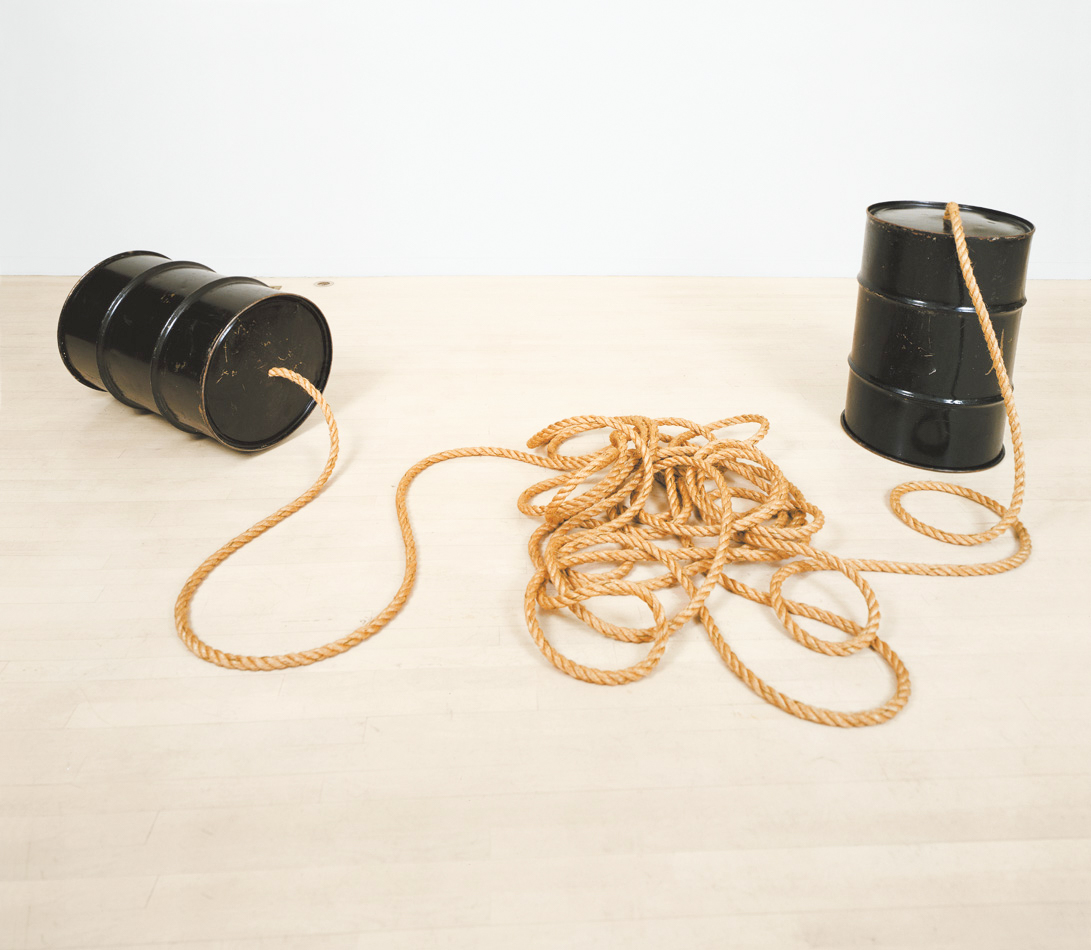
See You on the Other Side
Curated by Robert Blake, Jennifer Dalton, David Howe and Sara ShaoulMay 13th - July 23rd, 2016
601Artspace, 601 West 26th Street, suite 1755
Installation views
Nobutaka Aozaki
John Baldessari
Uta Barth
Alighiero Boetti
Eric Brown
Christian Erroi
Vera Lutter
Christian Marclay
In honor of 601Artspace’s upcoming move to a new home further downtown, our team decided to curate our last show in Chelsea together. We each paired together two works, drawing from some of the largest and most important pieces in the collection, as well as from the work of contemporary artists we admire. This concept pays homage to a founding goal of 601Artspace to accommodate the growing number of exceptionally large works in the collection and to share those works with the public. This exhibition also underscores our commitment to explore connections between collection artworks and other vital works of contemporary art.
Curators’ statements:
Robert Blake, Director of Special Projects:
Uta Barth “Sundial (07.2,)” 2007 and
Christian Erroi “As Above,” 2006
In contemplating a pairing, I immediately felt the resonance of Uta Barth’s “Sundial” and “As Above” by Christian Erroi. Both artists often work in series and embrace perceptual variances that are revealed as the work is created. In Barth’s images the palette is soft and does not hesitate to reach towards a pure white. The space between exterior and interior becomes a play of shifting focus, color, and abstraction. Erroi’s work is fragile and human, informed by a visual impairment that allows for his unique way of processing a visual field and sense of scale. In “As Above,” there is a quiet play of fine-tuned and elegant images encased in freestanding transparent plexiglass sculpture. Hovering between 2D and 3D representations, we perceive an overlap not just of the images but of the time taken viewing them, producing a musical lyricism that belongs to these works, intended or accidental.
Jennifer Dalton, Collection Manager:
Vera Lutter "Studio, XXX: June 29 - July 18, 2006," 2006 and
Eric Brown "DFW," 2007-2016
Both Vera Lutter and Eric Brown work with the medium of time. Vera Lutter's camera obscura images show the cumulative effects of light and movement over a number of days; in the case of her "Studio, XXX" the exposure took place over approximately three weeks and captures the image of a large two-dimensional airplane cut-out inside the artist's studio. Echoing Lutter's earlier images of real airplanes at the Frankfurt airport, "Studio XXX" renders the monumental subject ersatz and interior. Eric Brown's DFW is an uneventful yet tense 15-minute tracking shot captured by a camera held against the window of a plane on its seemingly interminable taxi to a runway along a desolate industrial landscape, eventually taking off into clouds that completely obscure the view. These two works’ aviation theme is an obvious symmetry, but the artists’ quiet accumulation of time is a more salient connection.
David Howe, Founder
Alighiero Boetti “Mappa,”1984 and
Christian Marclay “Dialogue of the Giants,” 1988
Christian Marclay’s works explore object and image relationships between fine art and audio culture. His interest lies in transforming sounds and music into critical and playful visual form through, collage, sculpture, installation, photography and video. In Dialogue with the Giants two 55-gallon oil drums are connected via a large rope echoing the child’s game while signaling the role of oil in our geopolitical present. Boetti’s series of large embroidered maps, Mappa, engage interests in conflict zones and conceptual models of production. His travels to Afghanistan and Pakistan led to organizing production of these world maps with available materials, and commissioning local craftsmen and women. Seen together, both pieces evidence the befuddling perplexity of human communication. One could imagine Boetti passing instructions to his Afghan embroiderers via Marclay’s elephantine tin-can telephone. A microcosm, perhaps, of the many attempts by one powerful culture to impose “order” on the dissimilarity of another, but with the crucial difference that Boetti welcomed the mismatches and confusions that resulted from his early version of global outsourcing.
Sara Shaoul, Gallery Manager:
John Baldessari “Tetrad Series: It Doesn’t Seem Much,” 1999 and
Nobutaka Aozaki “ Names on Starbucks Cups,” 2012-present
John Baldessari is well known for his conceptual approach to language, his use of image and text interchangeably, and his appropriation of existing media. The works of the Tetrad series offer the viewer film stills, portions of Goya works, still life objects, and text from writer Fernando Pessoa, to be parsed together into a narrative. I see Aozaki’s “Starbucks Cups” as part of the legacy of Baldessari’s experiments with the de-contextualization of language and a vocabulary of familiar imagery. The ubiquitous Starbuck’s iced coffee cups display the artist’s name as it is repeatedly misspelled by baristas. Beyond the cultural specificities of these exchanges, the piece speaks to the cycle of transformation of name into sound into written symbol, and back again, turning the Starbuck’s system of naming customers into both process and material, and turning Aozaki from passive consumer into active producer.
88 Eldridge St. New York, NY 10002
Tel: 212-243-2735
Open Thurs-Sun 1-6pm
© 601Artspace, 2018
